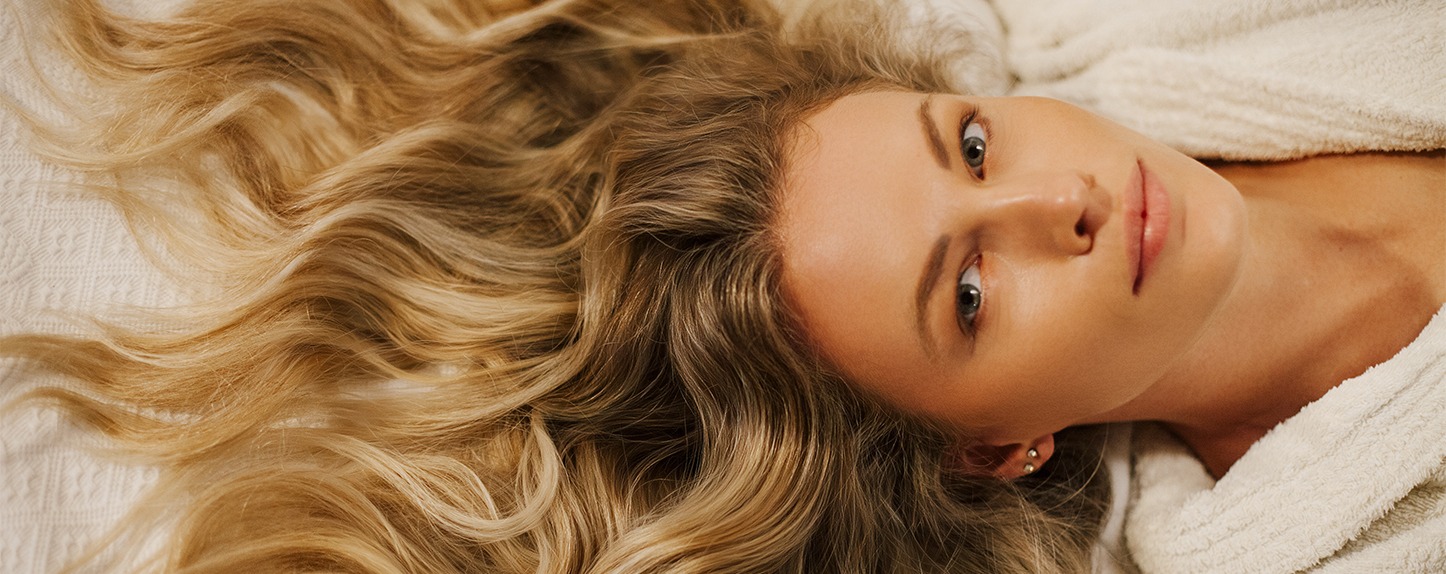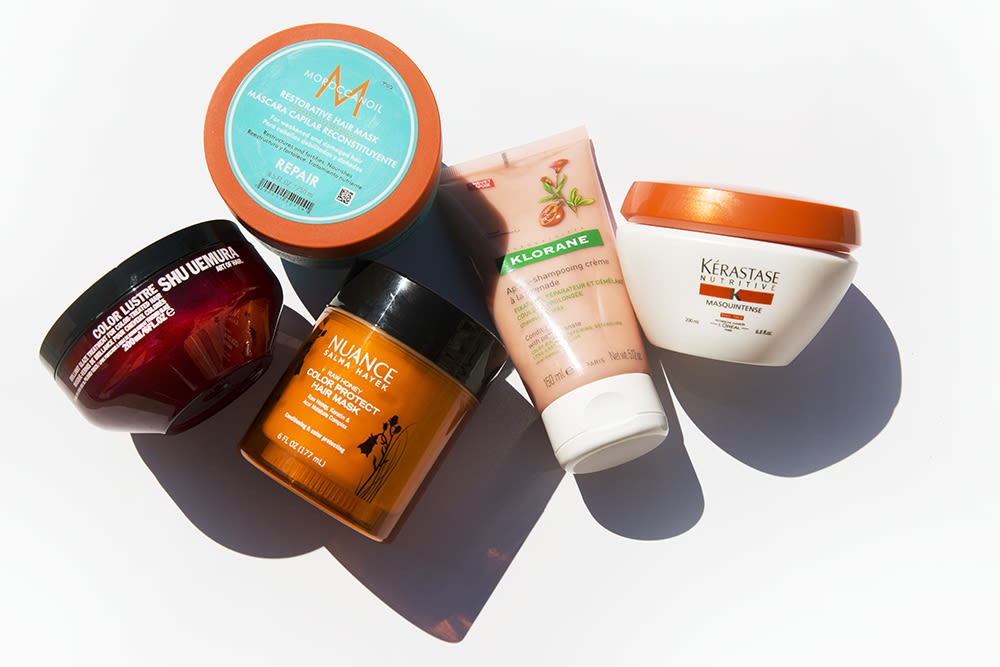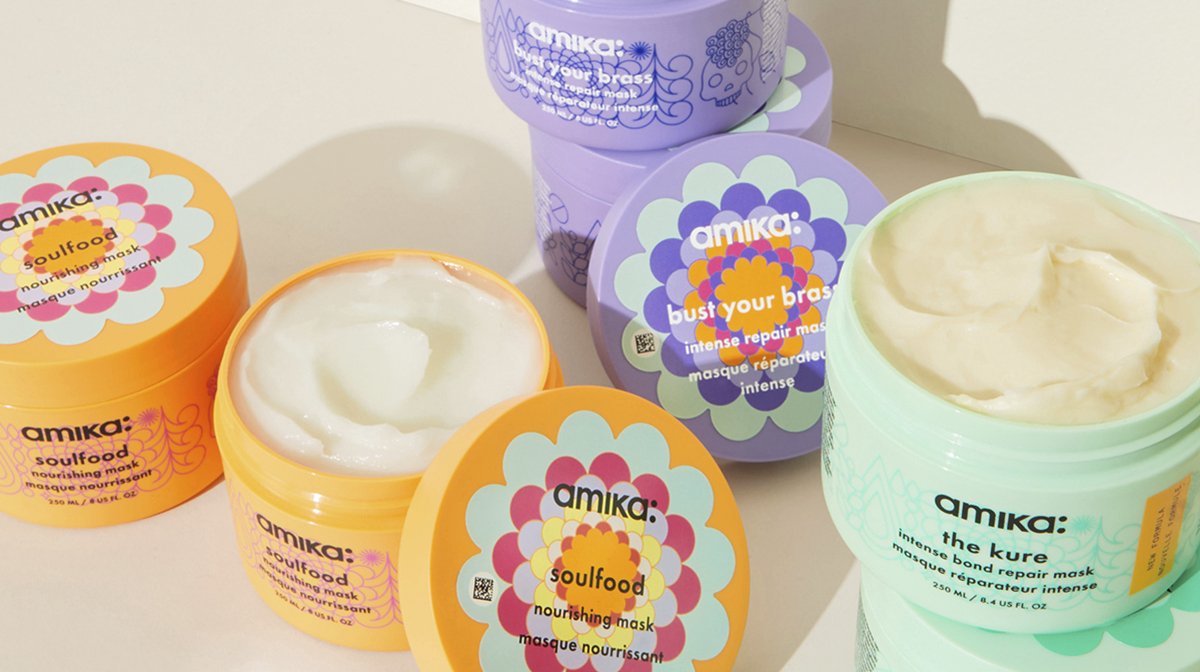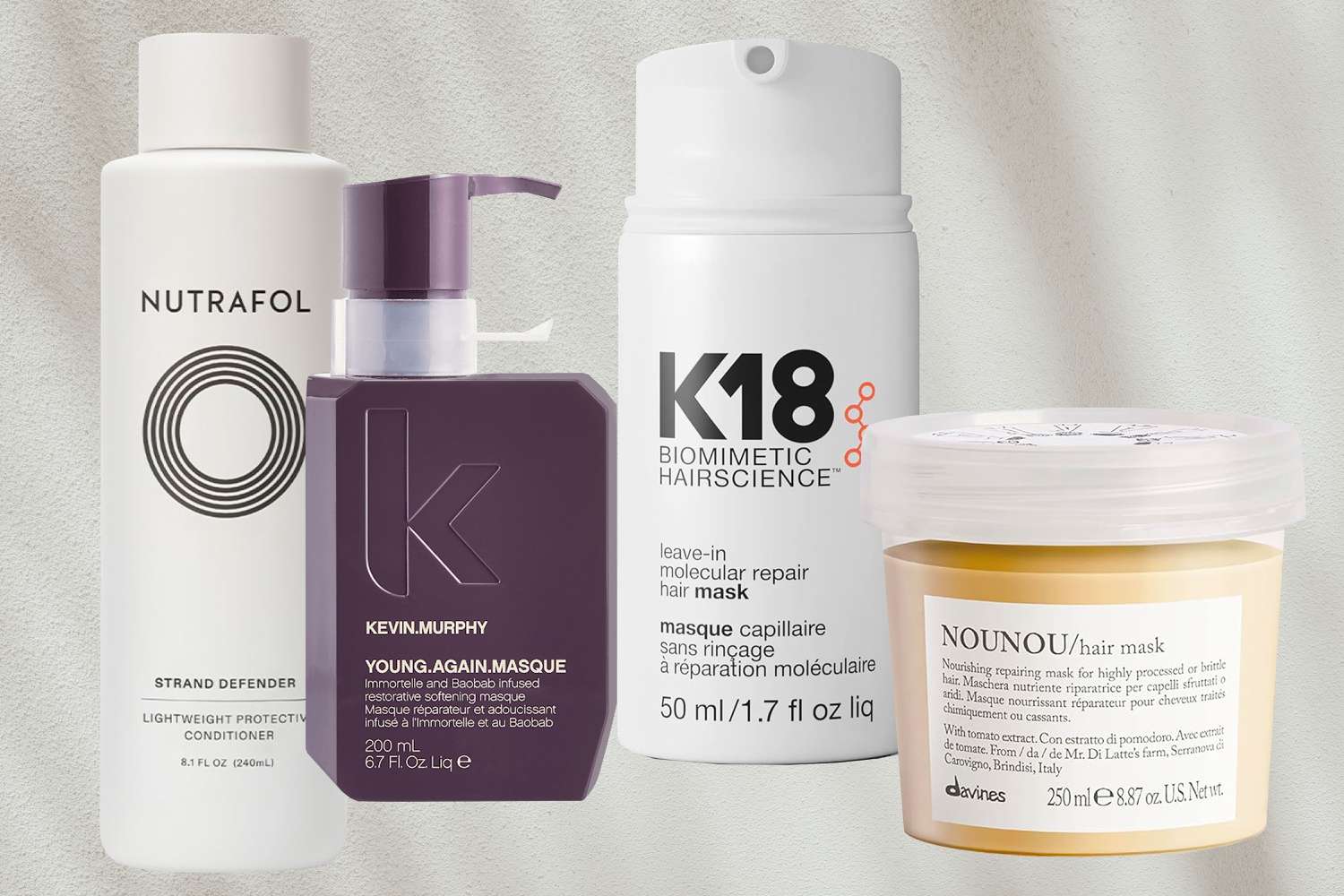The Quest for Perfect Hair

Imagine running your fingers through your hair, feeling the soft, silky texture, and watching it shine under the light. Healthy hair isn’t just about aesthetics; it’s a sign of vitality and care. Whether you’re dealing with frizz, dryness, or damage, your hair’s condition can significantly impact your overall confidence and appearance. In the pursuit of luscious locks, one secret weapon stands out: hair masks.
The Magic of Hair Masks
Hair masks are intensive treatments designed to nourish, repair, and protect your hair. Unlike regular conditioners, hair masks penetrate deeper into the hair shaft, delivering concentrated ingredients that tackle specific hair issues. These treatments can transform your hair, making it stronger, shinier, and more manageable. Whether you’re looking to hydrate dry strands, strengthen weak hair, or preserve your hair color, there’s a hair mask tailored to meet your needs.
The benefits of incorporating hair masks into your routine are plentiful. They offer a spa-like experience at home, providing your hair with the extra care it needs to stay healthy and beautiful. By regularly using hair masks, you can revive your hair, prevent future damage, and maintain its natural vibrancy. Dive into the world of hair masks and discover how these powerful treatments can help you achieve the hair of your dreams.
Understanding Hair Masks

Definition: What are Hair Masks?
Hair masks are intensive conditioning treatments designed to address various hair concerns. Unlike daily conditioners, which offer surface-level hydration and manageability, hair masks penetrate deeply into the hair shaft to deliver concentrated nutrients and moisture. These treatments are typically left on the hair for an extended period, ranging from a few minutes to overnight, allowing their beneficial ingredients to work their magic. Hair masks are formulated to target specific issues such as dryness, damage, frizz, and lack of shine, making them a versatile addition to any hair care routine.
Types of Hair Masks
Hair masks come in various formulations, each designed to address different hair needs. Here are some of the most common types:
- Moisturizing Hair Masks: Perfect for dry and brittle hair, moisturizing hair masks are rich in hydrating ingredients like shea butter, coconut oil, and aloe vera. These masks replenish moisture, leaving hair soft, smooth, and more manageable. They are especially beneficial for those with naturally dry hair or hair that has been damaged by heat styling or environmental factors.
- Strengthening Hair Masks: For hair that is weak and prone to breakage, strengthening hair masks are a lifesaver. These masks contain proteins such as keratin, collagen, and silk amino acids, which help to rebuild and fortify the hair’s structure. Regular use of strengthening masks can lead to stronger, more resilient hair that is less likely to break or split.
- Color-Protecting Hair Masks: Colored hair requires special care to maintain its vibrancy and prevent fading. Color-protecting hair masks are formulated with ingredients that lock in color and shield the hair from UV damage and environmental pollutants. These masks often contain antioxidants and UV filters, helping to extend the life of your color while keeping your hair healthy and radiant.
- Repairing Hair Masks: For hair that has suffered from extensive damage due to chemical treatments, heat styling, or environmental stressors, repairing hair masks are essential. These masks are packed with nourishing ingredients like argan oil, avocado oil, and vitamins that work to repair and restore the hair’s health. They help to smooth the cuticle, reduce frizz, and improve the overall texture and appearance of the hair.
Benefits of Using Hair Masks
Improved Hair Health: Hydration, Repair, and Protection
Hair masks are powerful treatments that provide intensive hydration, repair, and protection for your hair. Regular use of hair masks helps to replenish moisture lost due to environmental factors, heat styling, and chemical treatments. Ingredients such as natural oils, butters, and humectants deeply penetrate the hair shaft, ensuring each strand is nourished from the inside out. This results in reduced dryness and brittleness, making your hair more resilient and less prone to breakage. Moreover, many hair masks contain protective agents that shield your hair from further damage, ensuring it remains healthy and strong.
Enhanced Shine and Softness: How Hair Masks Transform Texture
One of the most noticeable benefits of using hair masks is the enhanced shine and softness they bring to your hair. By infusing your hair with essential nutrients and moisture, hair masks smooth the cuticle layer, which is responsible for reflecting light. This creates a glossy, shiny appearance. Additionally, the rich, emollient ingredients in hair masks soften the hair, making it silky to the touch. With regular use, you’ll find that your hair not only looks more vibrant but also feels incredibly smooth and manageable.
Damage Prevention: Protecting Hair from Environmental and Styling Damage
Our hair is constantly exposed to various stressors, from harsh weather conditions to the damaging effects of heat styling tools. Hair masks act as a protective barrier, safeguarding your hair from these detrimental factors. Ingredients such as antioxidants and UV filters help to combat the oxidative stress caused by free radicals and UV radiation, which can lead to hair color fading and weakened strands. Furthermore, by reinforcing the hair’s natural defenses, hair masks minimize the impact of daily styling practices, reducing the risk of split ends and breakage.
How to Choose the Right Hair Mask

Hair Type Considerations: Tailoring Hair Masks to Different Hair Types
Selecting the right hair mask starts with understanding your hair type and its specific needs. Different hair types require different treatments to achieve the best results.
- Dry Hair: Look for deeply moisturizing masks with ingredients like shea butter, coconut oil, and glycerin. These will help to restore lost moisture and add softness.
- Oily Hair: Choose lightweight, balancing masks that contain ingredients like clay, tea tree oil, or charcoal to help control excess oil without weighing down your hair.
- Curly Hair: Curly hair often needs extra hydration and definition. Opt for masks with ingredients like avocado oil, honey, and aloe vera to nourish curls and reduce frizz.
- Straight Hair: Straight hair can benefit from masks that add shine and prevent breakage. Ingredients like silk proteins, keratin, and argan oil are ideal for maintaining smooth and glossy strands.
Key Ingredients: What to Look for in a Hair Mask Based on Your Hair Needs
When choosing a hair mask, it’s crucial to consider the ingredients that will best address your specific hair concerns.
- Hydration: For dry and brittle hair, seek out masks with hydrating ingredients like hyaluronic acid, panthenol, and natural oils (e.g., coconut, jojoba, argan). These components help lock in moisture and improve hair elasticity.
- Strengthening: If your hair is weak and prone to breakage, look for masks containing proteins such as keratin, collagen, and silk amino acids. These ingredients help rebuild the hair’s structure and add strength.
- Color Protection: For colored or chemically treated hair, choose masks with antioxidants, UV filters, and color-lock technology. Ingredients like sunflower oil, vitamin E, and green tea extract can help preserve color and protect against fading.
- Repairing: Damaged hair benefits from masks with reparative ingredients such as peptides, ceramides, and amino acids. These components work to mend split ends, smooth the cuticle, and restore overall hair health.
Product Recommendations: Top Hair Masks for Various Hair Concerns
Finding the right product can be overwhelming, but here are some top-rated hair masks to address different hair concerns:
- For Dry Hair:
- SheaMoisture Raw Shea Butter Deep Treatment Masque: This mask deeply moisturizes and revitalizes dry, damaged hair.
- Moroccanoil Intense Hydrating Mask: Infused with argan oil, this mask provides intense hydration and improves hair texture.
- For Oily Hair:
- Briogeo Scalp Revival Charcoal + Tea Tree Scalp Treatment: This mask helps balance oil production and soothes the scalp.
- L’Oreal Paris Elvive Extraordinary Clay Hair Mask: Formulated with clay, this mask absorbs excess oil and purifies the scalp.
- For Curly Hair:
- DevaCurl Melt Into Moisture Matcha Butter Conditioning Mask: This nourishing mask enhances curl definition and reduces frizz.
- Maui Moisture Heal & Hydrate + Shea Butter Hair Mask: Packed with shea butter and aloe vera, this mask deeply hydrates and softens curls.
- For Straight Hair:
- Living Proof Restore Mask Treatment: This mask strengthens and smooths straight hair, making it more resilient.
- Olaplex No. 8 Bond Intense Moisture Mask: Known for its reparative properties, this mask adds shine and body to straight hair.
DIY Hair Masks: Natural Recipes
Ingredients from Your Kitchen
The beauty of DIY hair masks lies in their simplicity and the use of natural ingredients readily available in your kitchen. Items like avocados, honey, eggs, and olive oil are not just for cooking—they’re packed with nutrients that can transform your hair. These everyday ingredients are rich in vitamins, minerals, and fatty acids, offering a range of benefits from deep hydration to strengthening and shine.
Step-by-Step Recipes
Creating a DIY hair mask at home is not only cost-effective but also allows you to customize treatments based on your hair’s unique needs. Here are a few simple and effective recipes:
Avocado and Honey Mask:
Avocado is rich in vitamins and healthy fats, while honey acts as a natural humectant.
- Mash one ripe avocado until smooth.
- Add two tablespoons of honey and mix well.
- Apply the mixture to damp hair, ensuring even coverage.
- Leave it on for 20-30 minutes, then rinse thoroughly with warm water.
Egg and Olive Oil Mask:
Eggs are loaded with protein, which strengthens hair, while olive oil provides deep conditioning.
- Beat one or two eggs (depending on hair length) until frothy.
- Add three tablespoons of olive oil and blend.
- Apply the mask to your hair, focusing on the ends.
- Leave it on for 15-20 minutes, then rinse with cool water to avoid cooking the egg.
Yogurt and Banana Mask:
Yogurt helps cleanse the scalp and adds moisture, while bananas are packed with potassium and vitamins.
- Blend one ripe banana with half a cup of yogurt until smooth.
- Apply the mixture to your hair from roots to tips.
- Leave it on for 20-30 minutes, then rinse thoroughly with lukewarm water.
Benefits of Natural Ingredients
Using natural ingredients for hair masks offers several advantages. Firstly, they are free from harsh chemicals and synthetic additives, making them gentle on your hair and scalp. Natural ingredients are also highly effective due to their rich nutrient profiles. For example, avocados provide essential fatty acids and vitamins A, D, and E, which nourish and strengthen hair. Honey’s natural humectant properties help retain moisture, making hair softer and shinier.
Moreover, DIY hair masks can be tailored to your specific needs, ensuring that your hair receives exactly what it needs to thrive. Whether you’re dealing with dryness, damage, or dullness, there’s a natural ingredient that can help address your concerns. Embracing these homemade treatments not only promotes healthier hair but also supports a more sustainable and eco-friendly approach to hair care.

How to Apply Hair Masks for Best Results
Preparation: Pre-treatment Steps for Optimal Absorption
Before applying a hair mask, it’s essential to prepare your hair to ensure maximum absorption of the nutrients. Start by thoroughly washing your hair with a gentle shampoo to remove any buildup of dirt, oils, and styling products. This step opens up the hair cuticle, making it more receptive to the mask’s beneficial ingredients. If your hair is particularly tangled or prone to knots, gently comb it out while it’s still damp to ensure even application of the mask.
Application Techniques: How to Properly Apply Hair Masks
Applying a hair mask correctly can make a significant difference in its effectiveness. Here’s a step-by-step guide:
- Section Your Hair: Divide your hair into manageable sections. This makes it easier to apply the mask evenly and ensures that every strand is coated.
- Apply the Mask: Starting at the roots, work the mask through to the ends. Use your fingers or a wide-tooth comb to distribute the mask evenly. Pay special attention to the ends of your hair, as they are typically the most damaged and dry.
- Massage: Gently massage your scalp for a few minutes. This not only feels great but also stimulates blood flow to the scalp, enhancing the delivery of nutrients to the hair follicles.
- Cover Your Hair: For an added boost, cover your hair with a shower cap or a warm towel. The heat helps to open the hair cuticle further, allowing the mask to penetrate deeply.
Duration and Frequency: How Long to Leave the Mask On and How Often to Use It
The duration for leaving a hair mask on can vary based on the type of mask and your hair needs. Most masks should be left on for at least 20-30 minutes to allow the ingredients to fully absorb. However, some intensive treatments can be left on for an hour or even overnight for maximum benefits.
As for frequency, it depends on your hair type and condition:
- Dry or Damaged Hair: Use a hair mask 1-2 times per week to restore moisture and repair damage.
- Oily Hair: A weekly application is usually sufficient to balance oil levels without overloading the hair.
- Normal Hair: Once a week or every two weeks can help maintain overall hair health and shine.
Common Mistakes to Avoid
Overuse: The Pitfalls of Using Hair Masks Too Frequently
While hair masks are beneficial, using them too often can lead to unintended consequences. Overusing hair masks can cause product buildup, making your hair feel heavy and greasy. This is especially true for masks rich in oils and butters, which can overwhelm your hair if applied excessively. To avoid this, stick to the recommended usage frequency based on your hair type. For most hair types, using a hair mask once a week is sufficient, while very dry or damaged hair might benefit from twice-weekly treatments. Balance is key to ensuring that your hair remains healthy without becoming weighed down.
Wrong Product Choices: Choosing the Wrong Mask for Your Hair Type
Selecting a hair mask that doesn’t match your hair type and needs can lead to disappointing results. For instance, using a highly moisturizing mask on oily hair can exacerbate greasiness, while a lightweight mask might not provide enough hydration for dry hair. Understanding your hair’s specific requirements is crucial. If you have curly hair, opt for masks that enhance curl definition and reduce frizz. For color-treated hair, choose masks that protect and maintain color vibrancy. Taking the time to match your hair type with the right product will ensure that you achieve the desired benefits.
Application Errors: Incorrect Application Methods that Hinder Effectiveness
Proper application is essential to maximizing the benefits of hair masks. One common mistake is applying the mask unevenly, which can leave some areas untreated while overloading others. Always section your hair to ensure even distribution from roots to ends. Another error is not leaving the mask on long enough. Rushing the process won’t give the ingredients enough time to penetrate and work their magic. Conversely, leaving it on for too long, especially without proper rinsing, can lead to residue buildup.
Using too much product is another frequent mistake. More isn’t always better, and a generous but reasonable amount is usually sufficient. Additionally, failing to rinse out the mask thoroughly can leave your hair feeling sticky and weighed down. Always follow the instructions provided with the mask and ensure you rinse your hair until the water runs clear.
